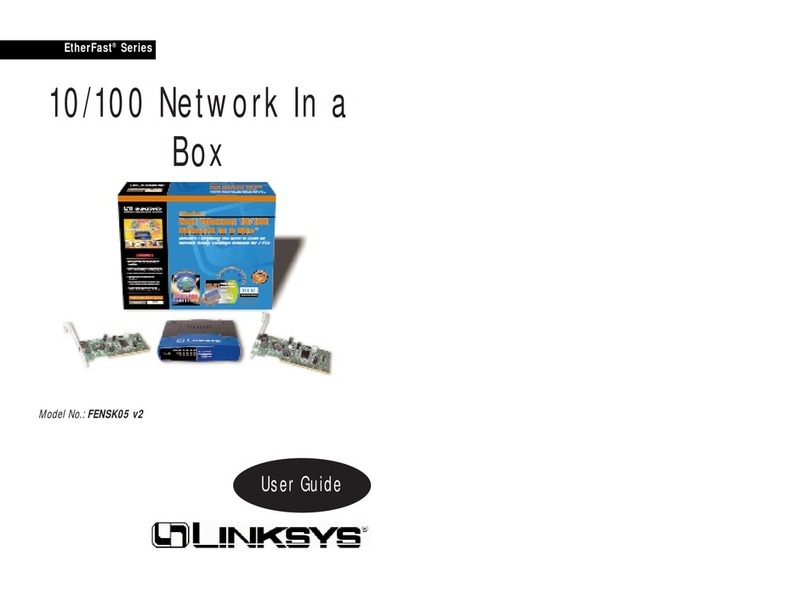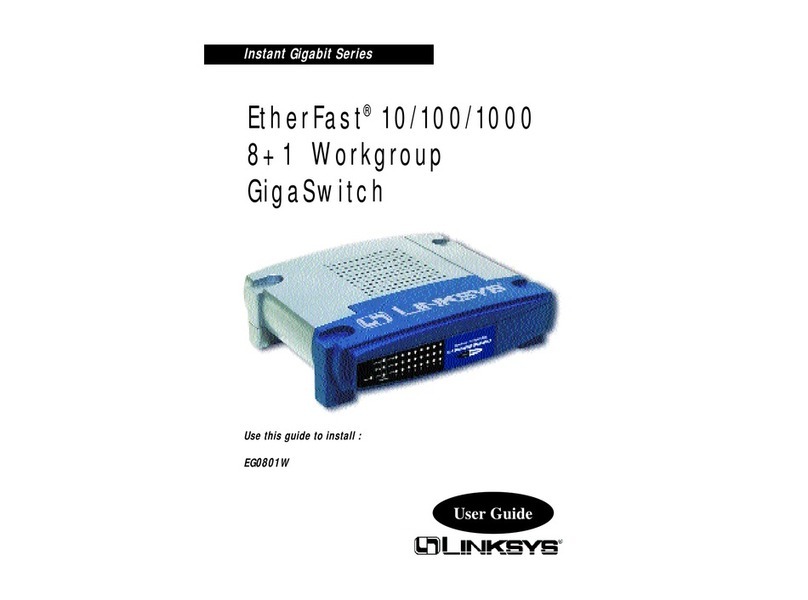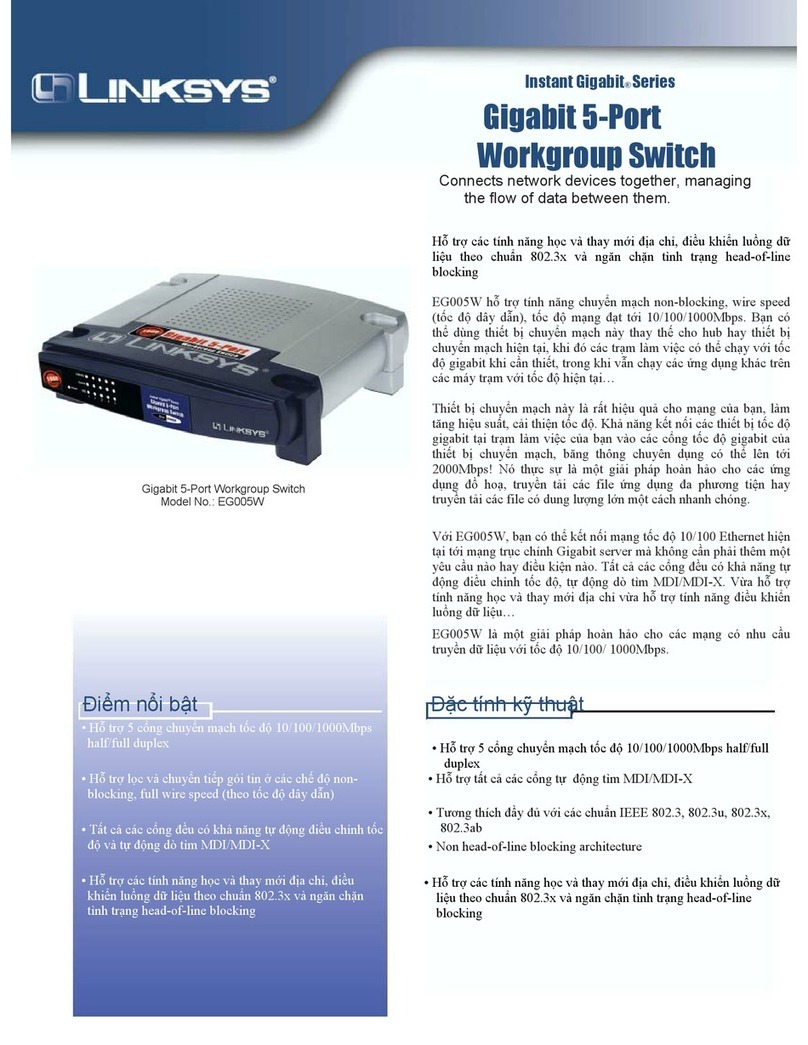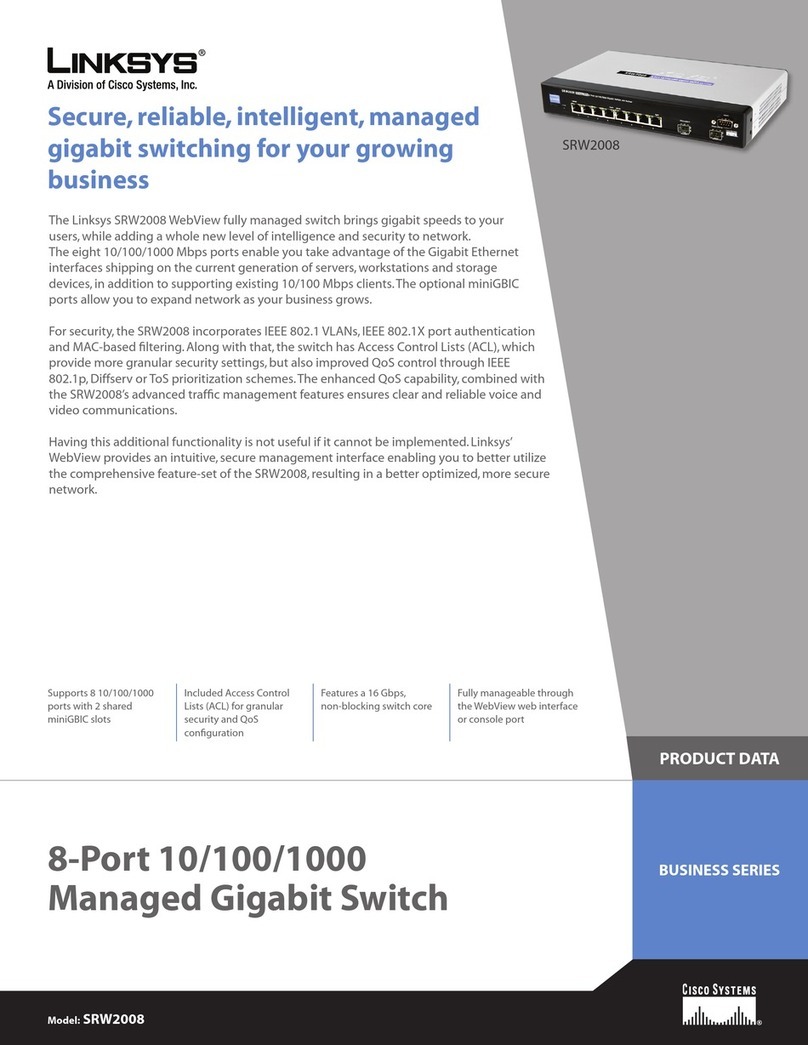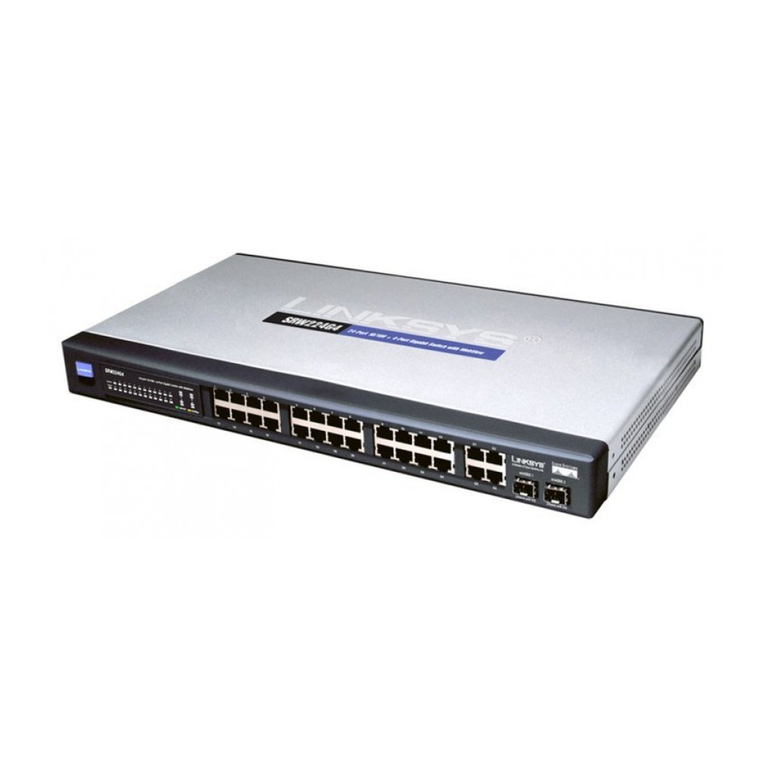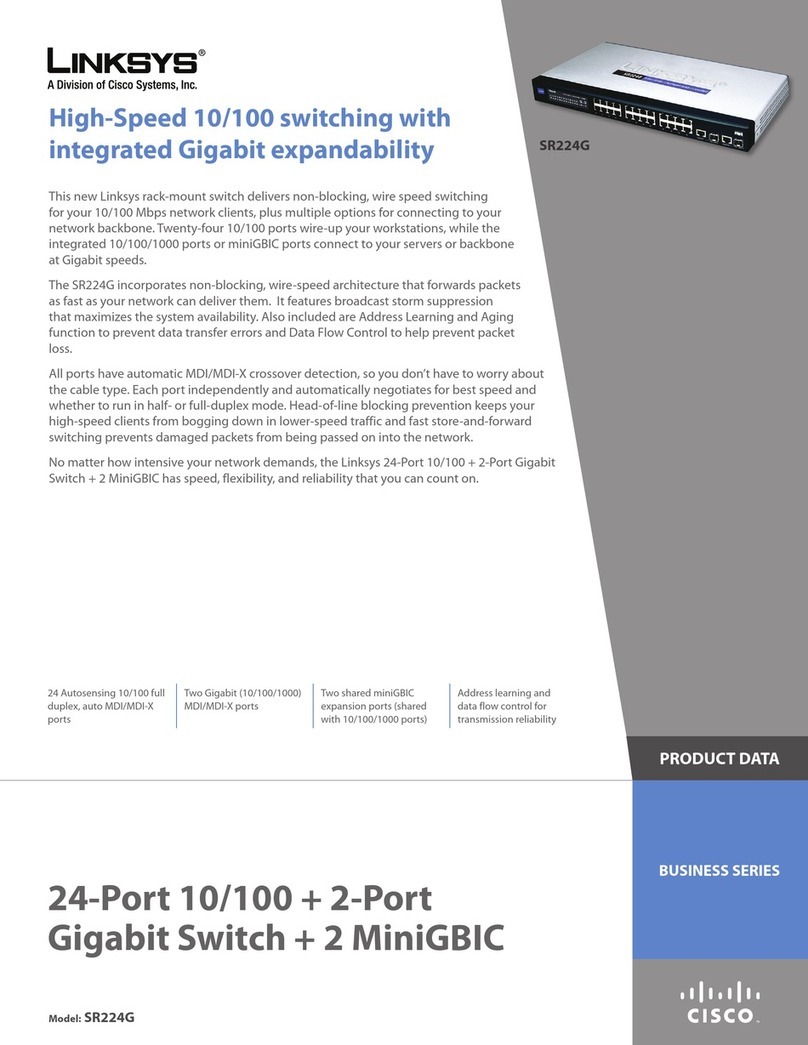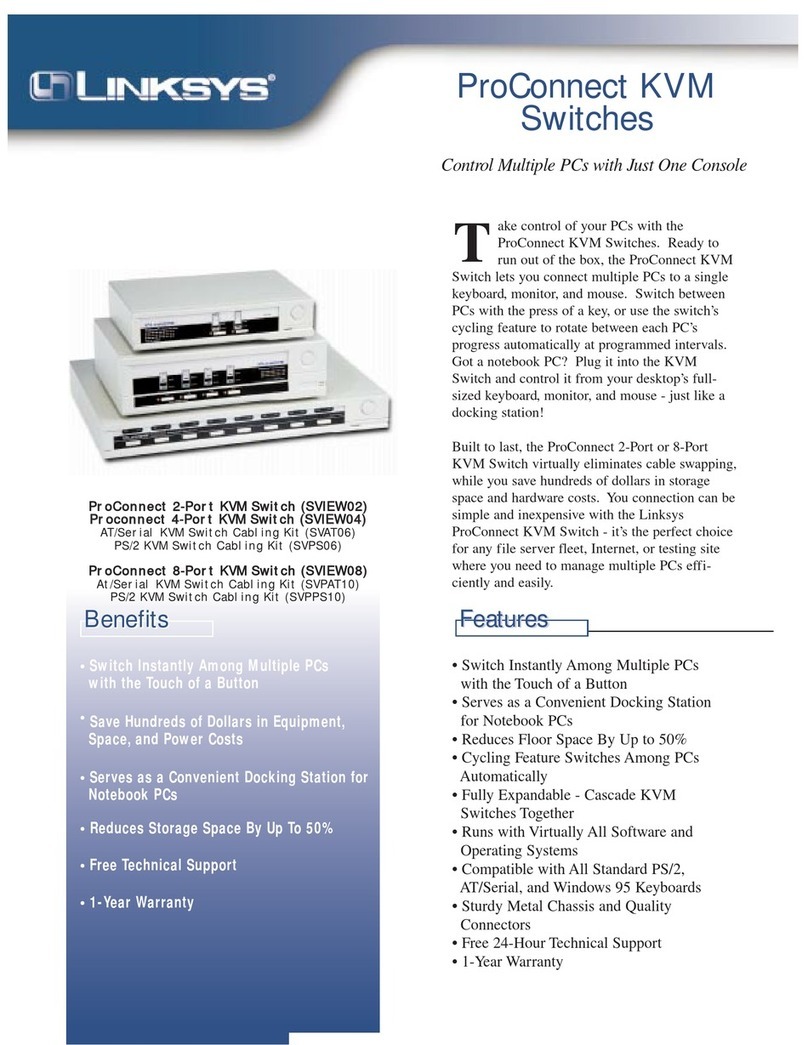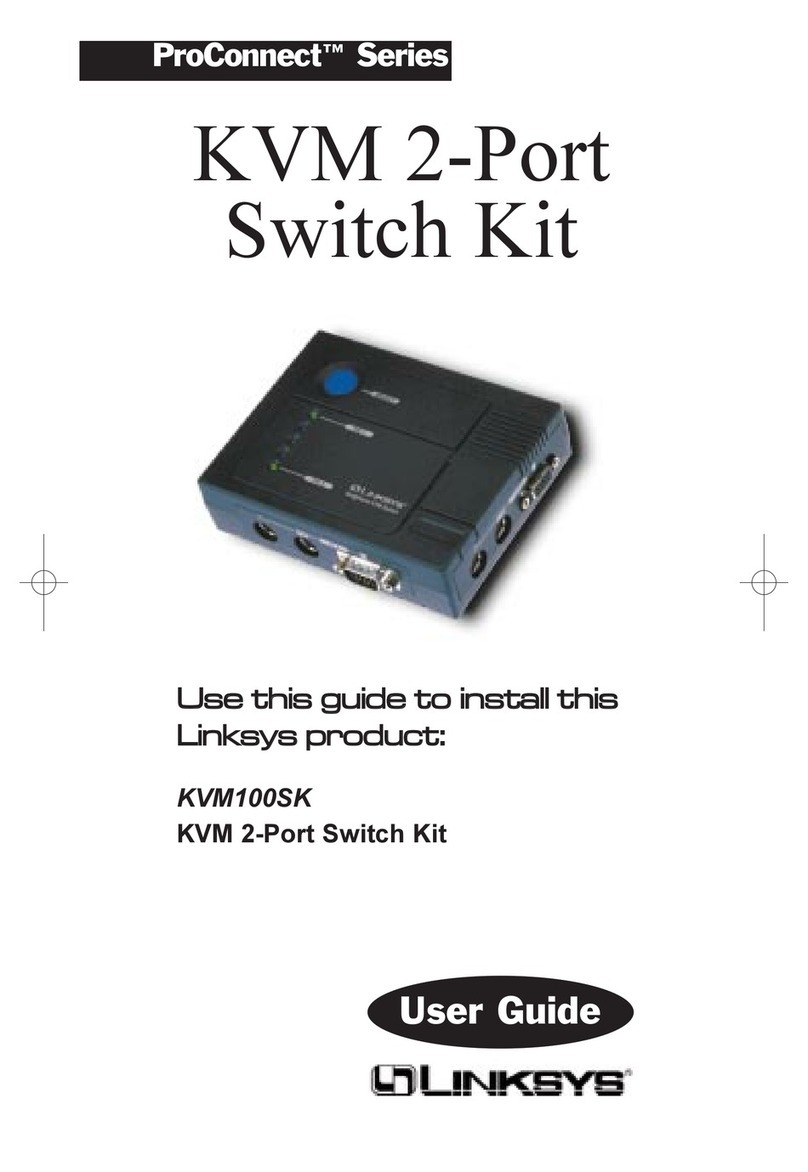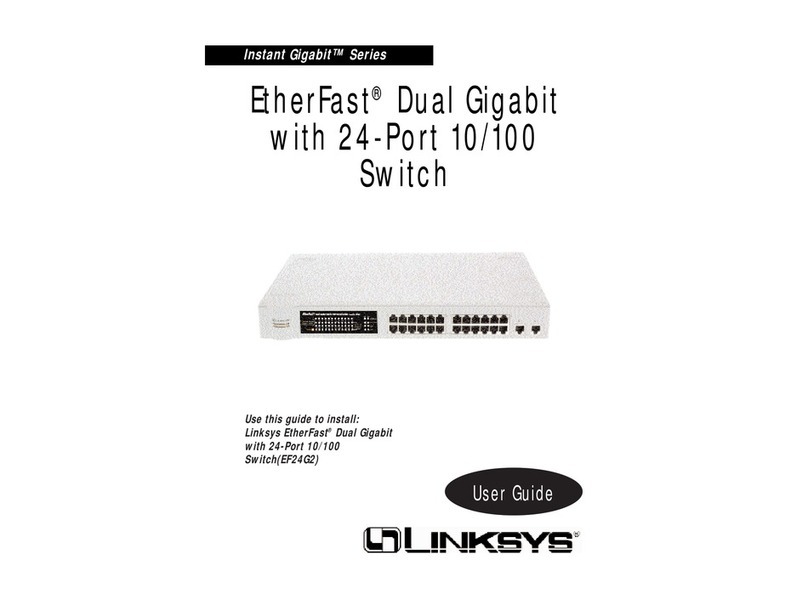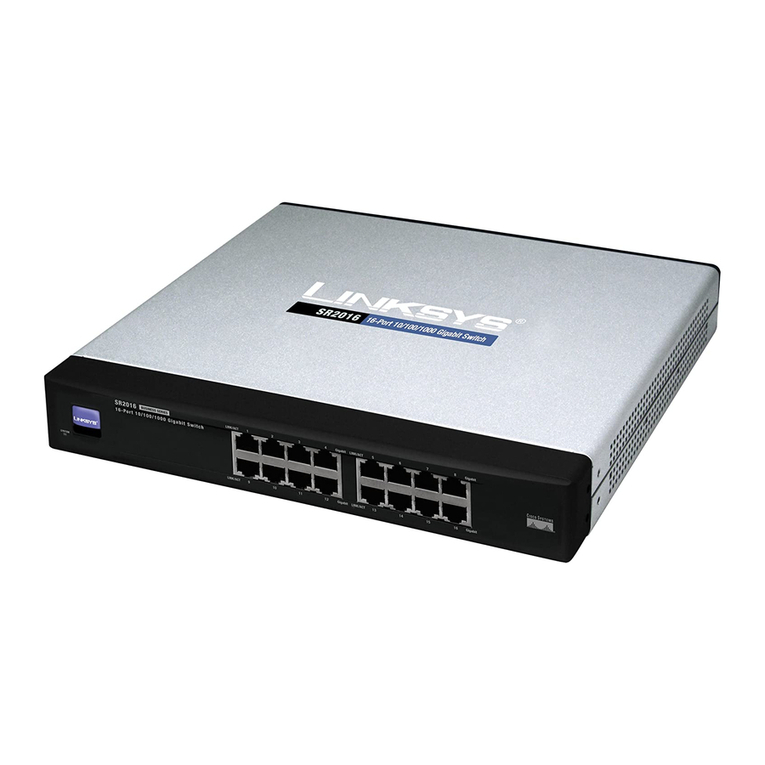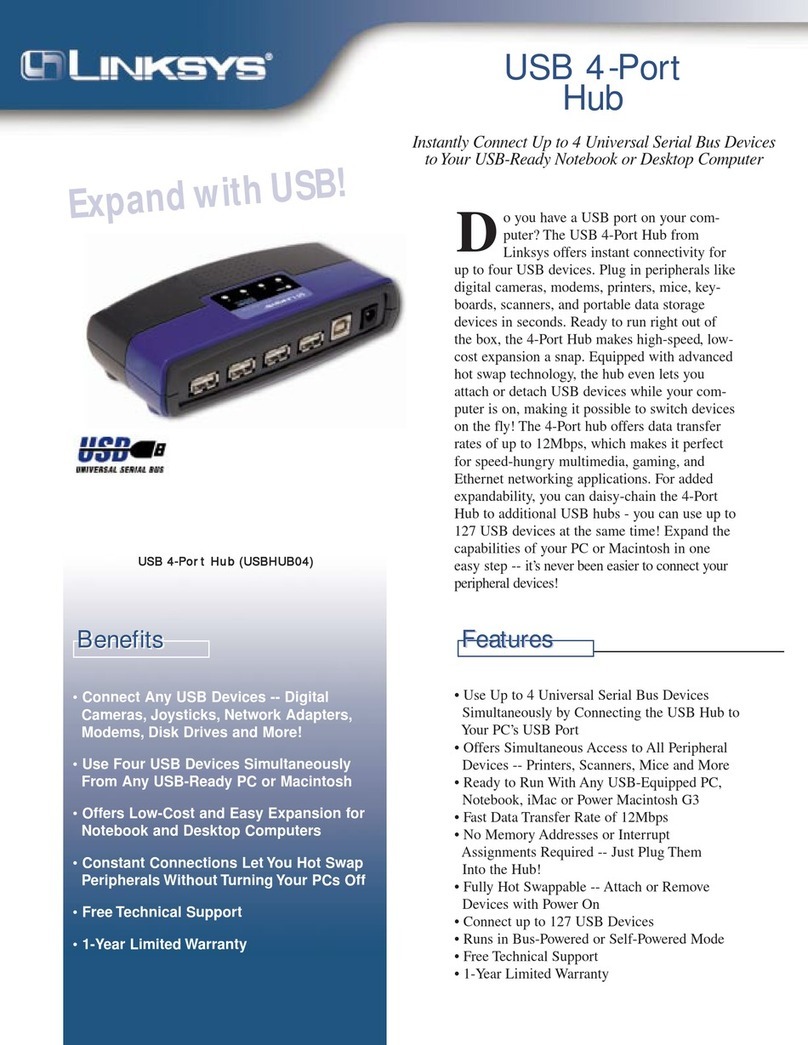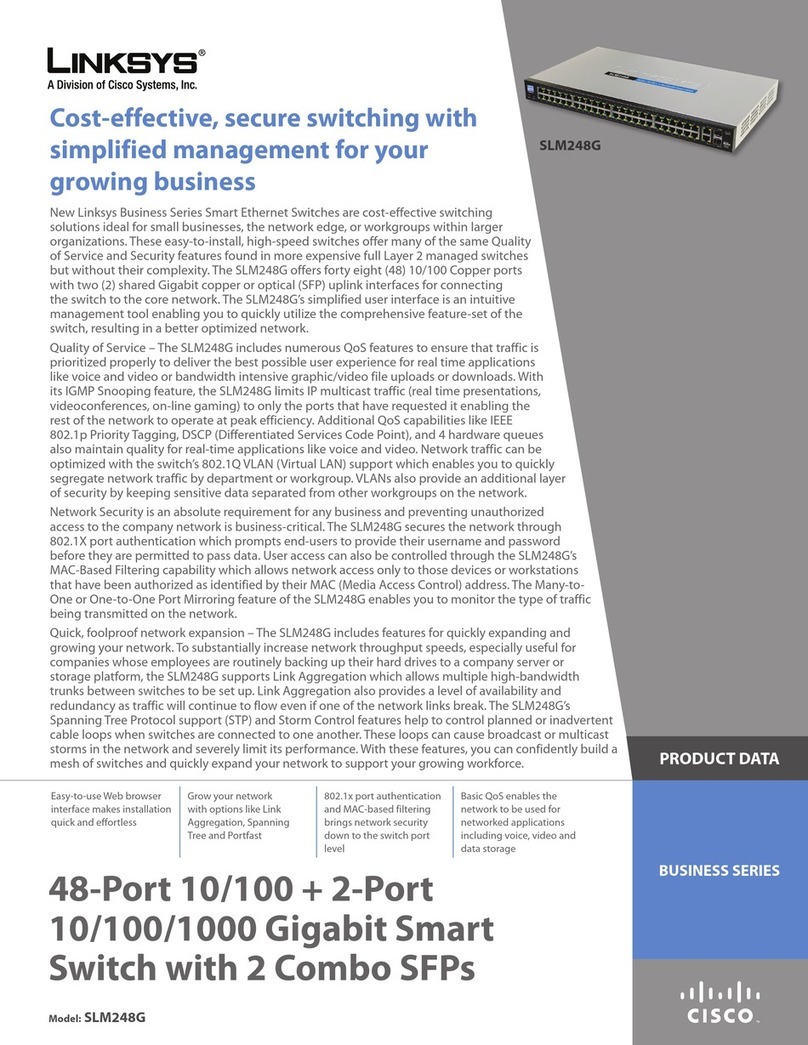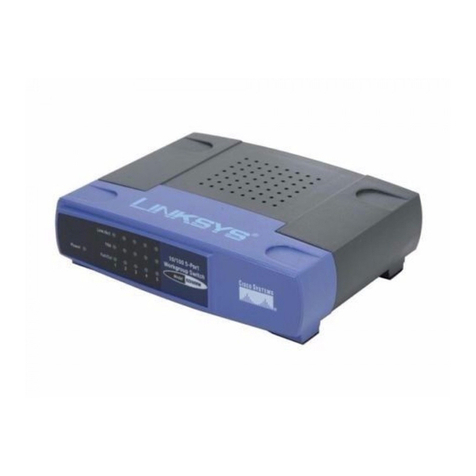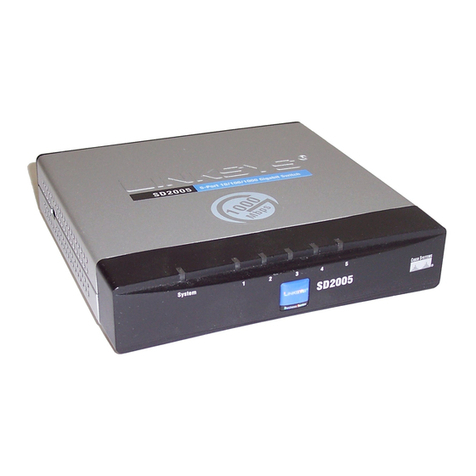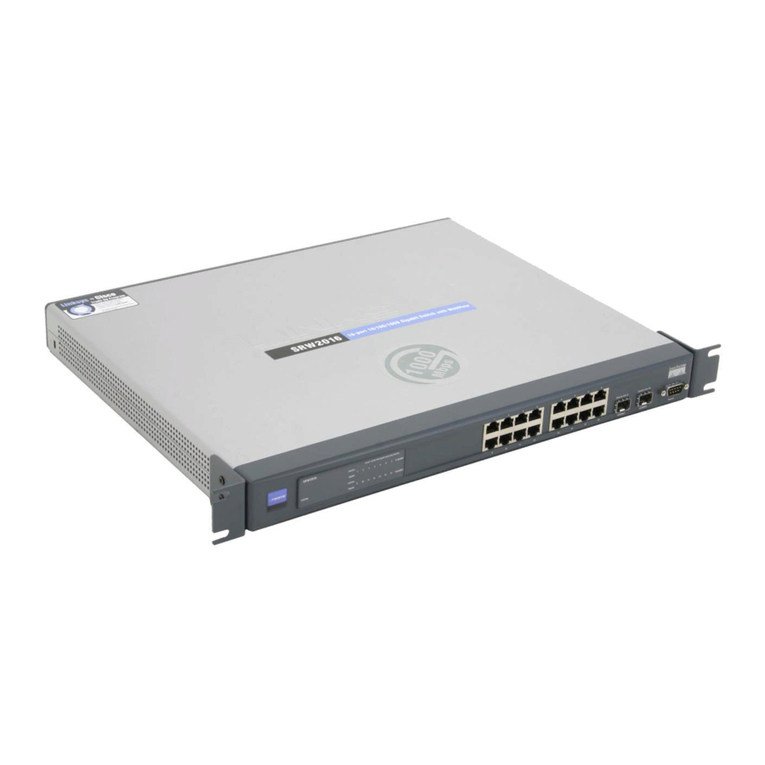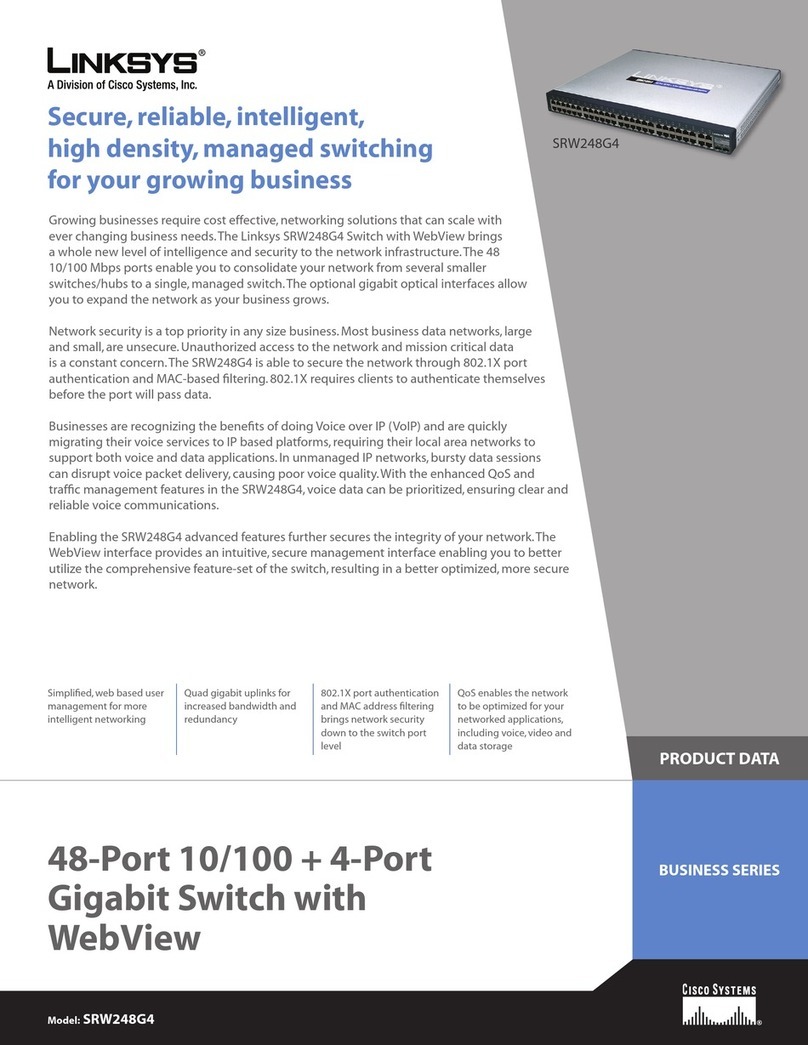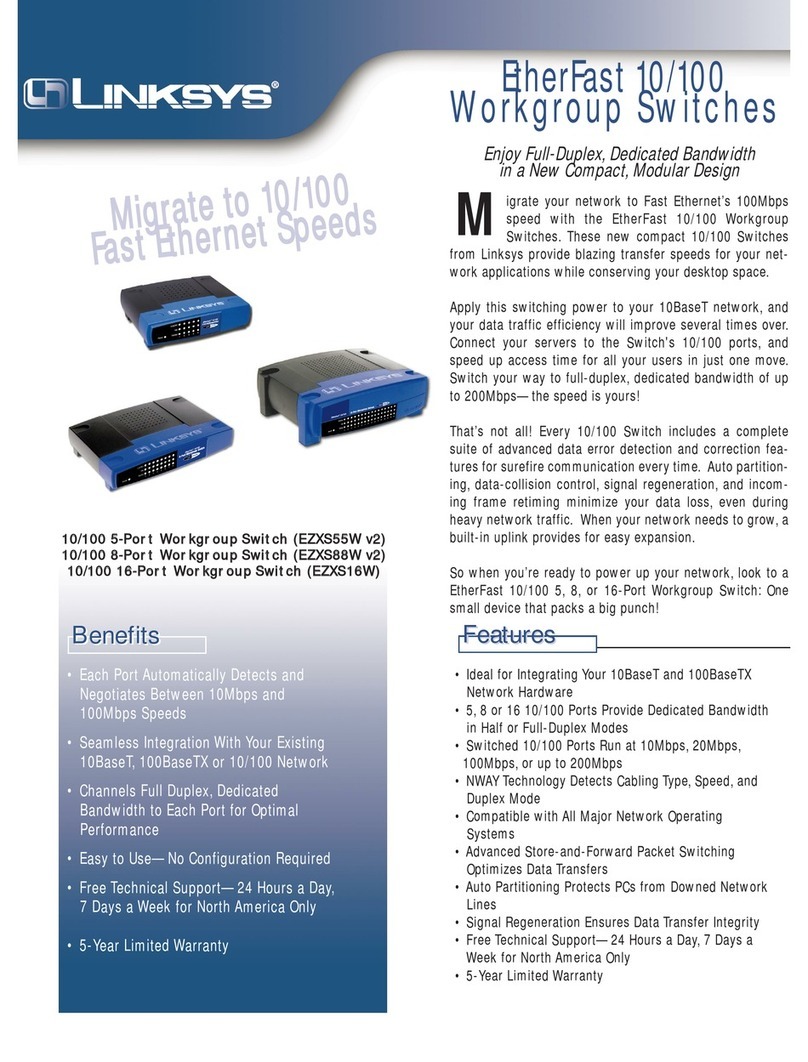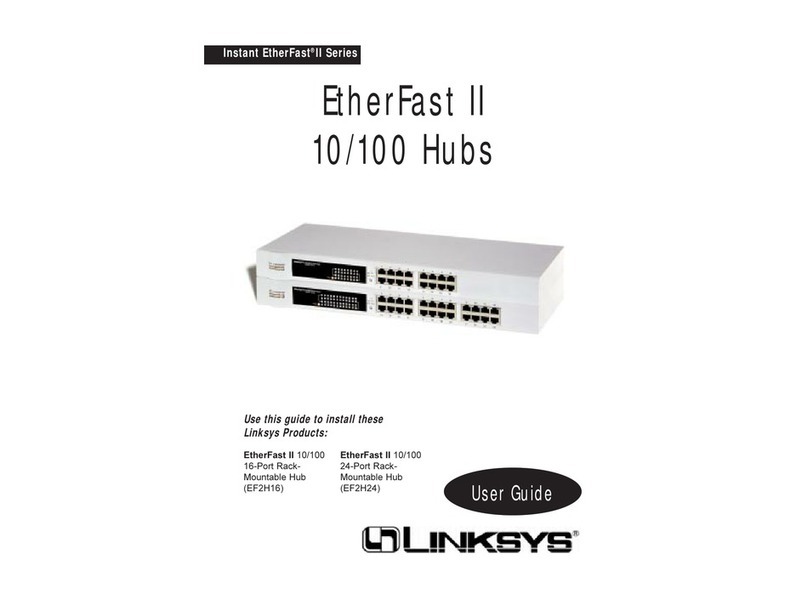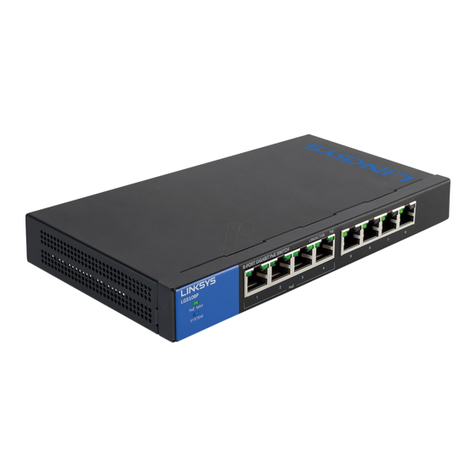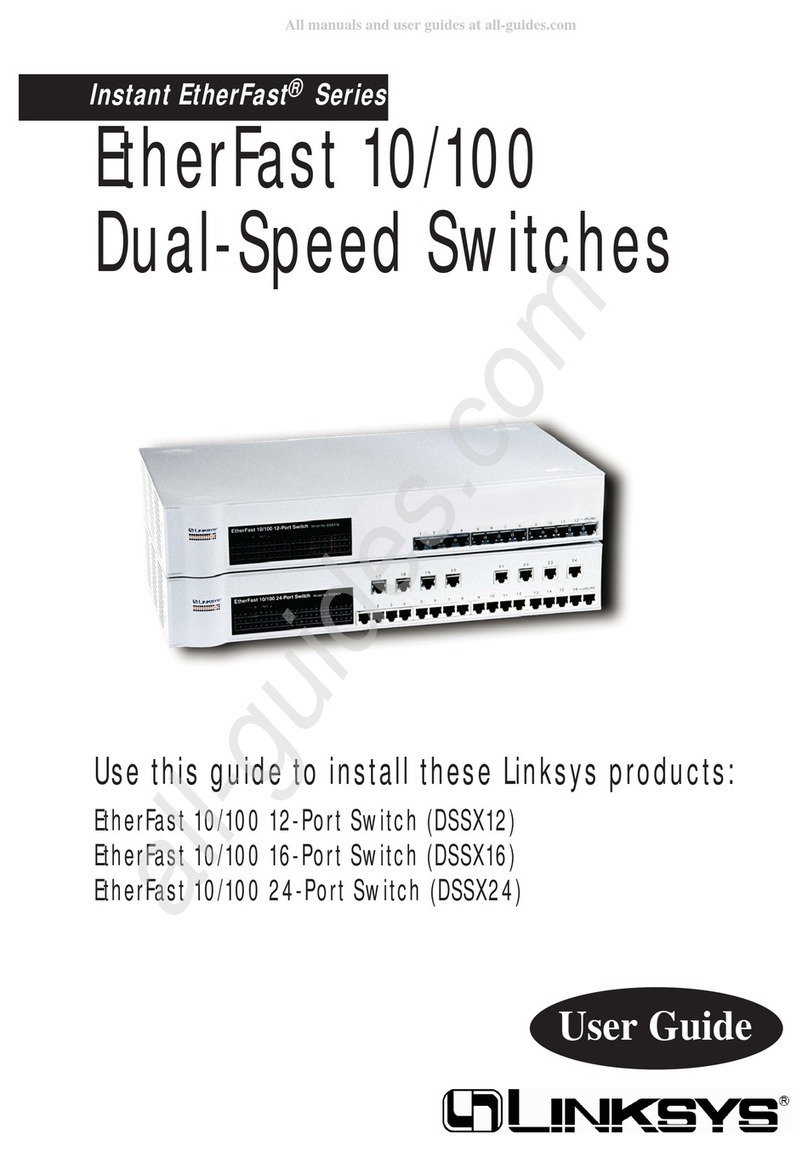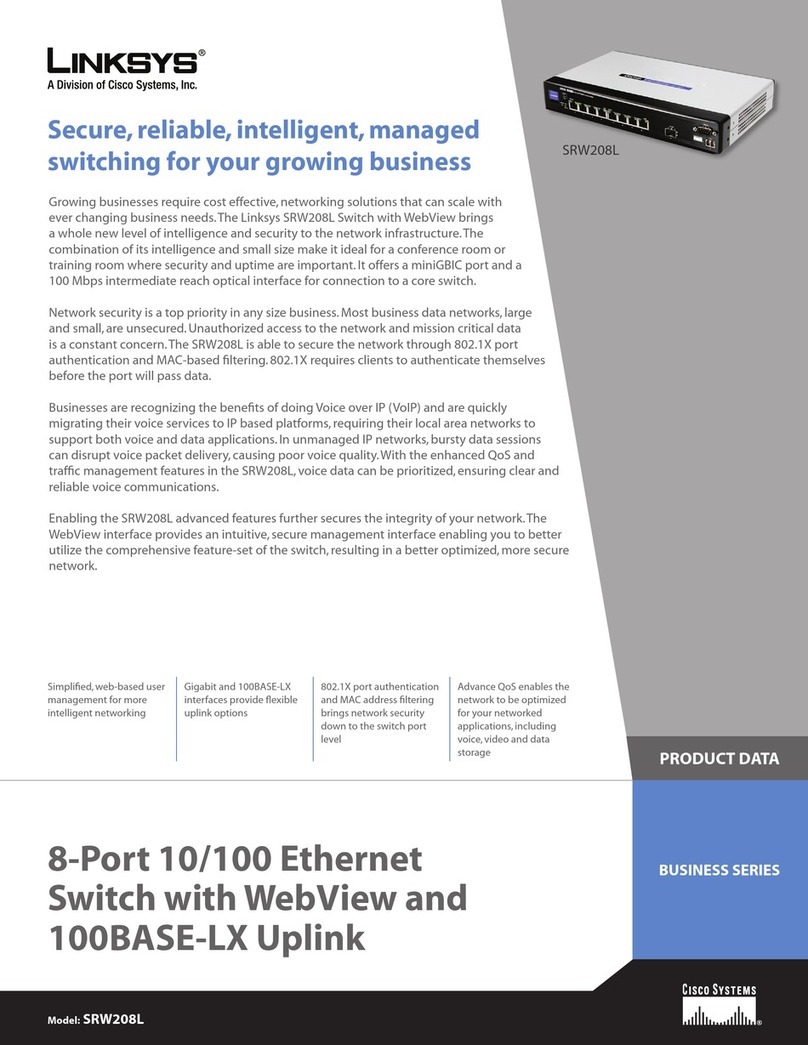Gigabit 5-Port Workgroup Switch
5
Instant Gigabit®Series
4
Here are some of the ways the new Switch can help you optimize your network
speed.
• Speed up Nodes from Your 10BaseT Network
In a 10BaseT network, connect your hubs, file servers, and key users, such as
network administrators, directly to your Switch to channel dedicated bandwidth
in full-duplex mode (if operating in full-duplex) to each station. The Switch
will have dedicated communication with all its connections simultaneously,
whereas a hub will only communicate in half-duplex transfer mode and broad-
casts information to all ports.
• Conserving Bandwidth with 10Mbps, 100Mbps and 1000Mbps Segments
10BaseT and 100BaseTX hardware are not readily compatible, but the Switch
can designate network segments of different speeds. This allows you to run one
100Mbps segment to serve users without a need for considerable speed, and a
faster 1000Mbps segment devoted to users who depend heavily on graphics,
multimedia, database, or other speed-intensive applications. With switched
segmentation, your 1000Mbps users will not be slowed down by the users on
the 10/100Mbps segment.
• Run 10/100Mbps Peripherals in a 1000Mbps Network
Most of the network peripherals in place today run at 10/100Mbps, since
100BaseTX has been the standard network speed to date. These peripherals,
designed to operate at 100Mbps, cannot readily communicate with
1000BaseTX equipment. A 10Mbps interface is also required for cable and
DSL connections, which are quickly becoming very popular ways to access the
Internet. The Switch provides your 10BaseT equipment and cable and DSL
lines with a 10Mbps interface while still running your Fast Ethernet devices at
100Mbps or your Gigabit devices at 1000Mbps.
• Strengthen Data Transfers through Signal Regeneration
The Switch functions as a repeater, which regenerates data signals as they pass
through it. This feature acts as a safeguard to deter data loss and ensure that
transmissions arrive at their destination intact. Switches positioned between
hubs can preserve your data’s integrity and eliminate your need to buy and use
repeaters in your Fast Ethernet or Gigabit network.
Tips on Switching Your Network
Chapter 3: Installing the Gigabit 5-
Port Workgroup Switch
Installing the EtherFast®Gigabit Ethernet Switch may involve installing both
an adapter and the Gigabit Ethernet Switch. If you are integrating these items
into an existing network, some additional steps may be necessary involving set-
tings for your existing equipment. Consult your network administrator for
more information about how the Gigabit Ethernet Switch will interface with
your existing network components.
The Switch’s back panel has five RJ-45 ports. Each 10/100/1000 port automat-
ically detects the speed and duplex of the attached cabling to a network card,
switch, hub, etc. The ports operate in either 1000Mbps, 100Mbps, or 10Mbps.
Each 10/100/1000 port on your Switch can connect to workstations, file
servers, hubs, routers or other switches. Connections to the switch require
Category 5 Ethernet network cabling (Category 5e for Gigabit connections.
To connect a computer directly to the Switch, plug one end of a standard net-
work cable into the switch, and then plug the other end of the cable into the
computer’s network adapter.
Plug in the Gigabit Ethernet Switch’s power cable. The Power LED will light
up. As devices make connections to the Switch’s ports, each port’s correspon-
ding FDX or ACT LED will light up. The remaining LEDs will also light up
according to how your connection is made, e.g. full or half duplex, 10Mbps,
100Mbps, or 1000Mbps.
If the Switch experiences excessive data collisions, verify that your network
cabling is securely crimped and installed properly.
Overview
Installing the Gigabit 5-Port Workgroup Switch
Connecting Your Hardware Together and Booting Up
